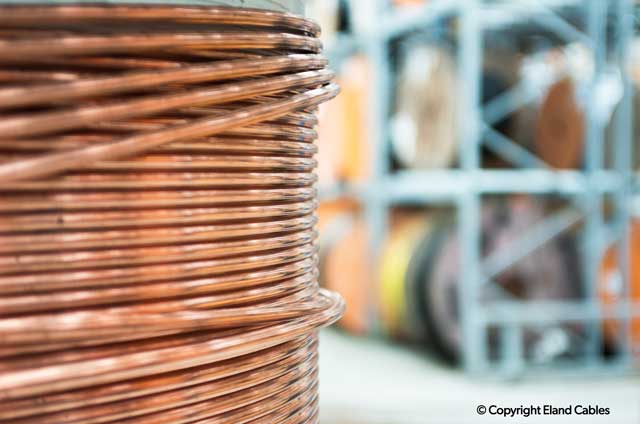How do electrical cables work?
Electrical cables work by providing a low resistance path for the current to flow through. Electrical cables consist of a core of metal wire offering good conductivity such as copper or aluminium, along with other material layers including insulation, tapes, screens, armouring for mechanical protection, and sheathing. These additional layers are designed principally to allow the metal core to continue to conduct electrical current safely in the environment it is installed in.
A good conductor is made of a material whose atomic structure has loosely bound electrons in its outer shell which can move across the atomic matrix of the material (see our FAQ on what is electricity for more information on atoms) This movement of electrons is known as the current flow. On the contrary, good insulators have tightly bound electrons which make it difficult for this current flow.

The simplest electrical cable may just be a metal conductor - these cables are used as overhead line wires manufactured without any insulating material around the conductor other than the air that surrounds the conductor. Overhead cables such as those used in the rail industry, require practical considerations to ensure that the cable is isolated from any means of accidentally grounding the electrical conductor (grounding the cable would see the current pass through it, electrocuting anyone in contact). Commonly used Rail OHL including Hornet and Cockroach have PVC insulated variations. Cables used either at ground level, within reasonable reach, or underground need to be effectively insulated to both maintain current flow through the cable and to be safe for users.
The amount of current which can effectively flow through the electrical cable will be determined by a combination of factors:
- the cross-sectional area of the conductor
- the resistance of the conductor material
- the insulation material
- the installation method or environment.
The effect of resistance to current flow is the heating of the conductor and the surrounding insulation layers. Over-heating has the potential to cause failure of the insulation material resulting in current short circuiting, electric shock, or fire.
People also ask
Electrical current flows from a point of positive charge to a point of negative charge whilst essentially the electrons flow in the opposite direction...
Electrical conductivity and conductor resistivity are essentially the opposite of each other: Electrical conductivity is the ability of a material to conduct an electrical current...
The earliest use of recognisable electric cable was probably the early commercialised Telegraph lines such as that strung between Washington, D.C, to Baltimore, Maryland in 1844...
Cable Portfolio
View our comprehensive range of power, data, control and instrumentation cables and accessories
Go